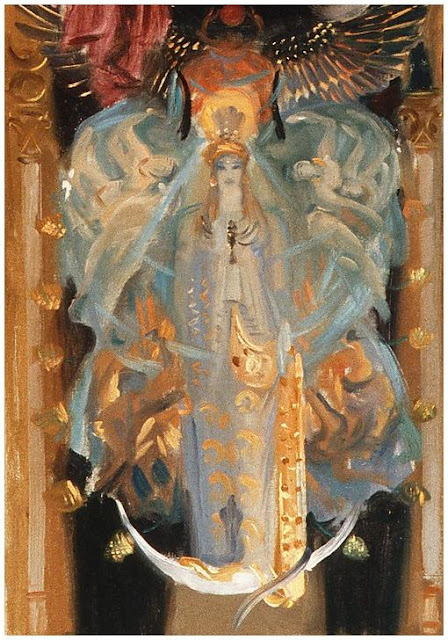- Banned
- #1
Goddess Astarte: Goddess of Fertility, Beauty, War, and Love

Known in the ancient Levant as Ashtart and in the Hebrew Bible as Ashtereth, the beautiful Astarte may owe many of her characteristics to Mesopotamian Ishtar, as the similarity in their names proclaims. Like Ishtar, Astarte seems to have had strong connections with both war and love/sexuality. In historical times, she received offerings in ancient Ugarit in Syria; her name appears forty-six times in texts from that city. One of her main centers was Byblos, where she was identified with Egyptian goddesses Hathor and Isis. In the second millennium BCE, Astarte was, like Anat, a war goddess of the Egyptians (Patai 1990:56). Large numbers of ancient Israelites revered her, and versions of her name occur at least nine times in the Hebrew Bible. She was also an important deity of the Phoenician towns of Tyre and Sidon, whence she and her veneration spread with Phoenician merchants throughout the Mediterranean (Patai 1990:55-66).
The Ugaritic poems present Astarte as a model of beauty and usually associate her closely with Baal, the storm god, for she consistently supports his cause (Coogan 1978:61, 65, 74, 89, 116). On at least five occasions the mythic material pairs her with Anat, perhaps an indication that the two goddesses were already beginning to meld into one another. Yet, since Astarte's name occurs quite often in offering and deity lists, it is clear that she had an important, if not central place in ritual and sacrifice (Olmo Lete 1999:71). An enormous number of female images originated from the excavations at Ugarit, and scholars have labeled many of them as Astarte. However, to date, no one has been able to demonstrate that they actually represent Astarte.
According to Patai, the "original meaning of the name Astarte was 'womb' or 'that which issues from the womb,'" an appropriate title for a fertility goddess (Patai 1990:57). In statements about Syro-Canaanite religion, the Biblical texts often couple the ashteroth, "the Astartes," with the baalim, "the Baals," an indication that the writers knew that many local versions of these deities existed. However, this repeated connection of Astarte and Baal has led some scholars to conclude that the Hebrew Bible understood Astarte to be Baal's consort (Day 2000:131; Patai 1990:57). If she were his consort, she too should have associations with fertility.
Two passages in the Book of Jeremiah (7.17-18 and 44.15-19) refer to ancient Israelite worship of a "Queen of Heaven." These passages provide a very rare glimpse into ritual practices of Judahite popular religion. Around the turn of the seventh century BCE, Jeremiah preaches to Israelite exiles in Egypt. To his horror whole families, with women in the lead, were making offerings to a goddess. They poured libations, built fires, and baked "cakes [kawwanim] for the Queen of Heaven" (Jer.7:18). The scholarly literature presents a number of theories about who the "Queen of Heaven" was (Toorn 1998:83-88; Patai 1990:64). However, since "Queen of Heaven" was one of the many titles of the Mesopotamian goddess Inanna-Ishtar, for whom worshippers also made cakes [kamanu], it is possible that the goddess in the Jeremiah passages was Astarte (Toorn and Horst 1999:678-679; Patai 1990:64).



